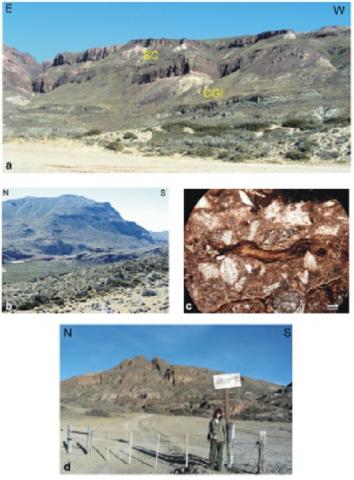P. Sruoga, M.S. Japas, F.M. Salani, L.E. Kleiman
2 014
Journal of Volcanology and Geothermal Research Volume 269, 1 January 2014, Pages 44-56
Pyroclastic and lava vent-facies, from the Late Jurassic El Quemado Complex, are described at the southern Lake Ghío, in the Cordillera Patagónica Austral. Based on the comprehensive study of lithology and structures, the reconstruction of the volcanic architecture has been carried out. Four ignimbrites and one rhyolitic lava unit, affected by oblique-slip normal faults have been recognized. The evolution of La Peligrosa Caldera has been modeled in three different stages:1) initial collapse, consisting of a precursory downsag subsidence, related to a dilatational zone, which controlled the location of the caldera, 2) main collapse, with the emplacement of large volume crystal-rich ignimbrites and megabreccias, under a progressive subsidence controlled by a pull-apart structure related to a transtensional regime and 3) post-collapse, in which lava flows and associated domes were emplaced under an oblique-extensional regime. The caldera records a remarkable change from transtension to oblique extension, which may represent an important variation in regional deformation conditions during Jurassic times. La Peligrosa Caldera may be considered a key event to understand the eruptive mechanisms of the flare-up volcanism in the Chon Aike Silicic Province.

